
Best Marine Binoculars Review (2024)
The best marine binoculars whether for boating, sailing, birdwatching, etc., should at minimum include the below features:
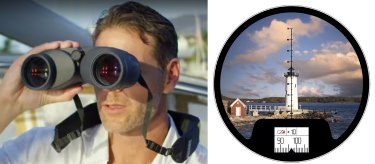
- 7x50 - Best size for marine binoculars with the combination
of magnification (7) and objective lens size (50 mm) for providing a wide
field of view (FOV) and stable image on moving boat, as well as increased
light-gathering capacity which will be its greatest advantage in low-light conditions
(dawn, dusk, cloudy days, fog, etc.).
You can go higher in magnification (12x or 15x) if you are using image stabilization binoculars.
- Exit pupil size: 7 mm or above. You want the exit pupil size to
match the size of your pupil when it's dilated (which happens during low light
conditions) - which is 7 mm.
If it's smaller, less light reaches you eye and makes objects more difficult to view. Exit pupil of a binocular can be calculated by dividing the objective lens size by the magnification. This is why 7x50 is ideal - 50/7 = 7.1 mm exit pupil.
- Porro prism design - Provides a rich depth of field, better contrast, more clarity, brighter view, wider FOV, and is more durable than roof prism design which is more complex and requires better/additional optical coatings to get the equivalent visual quality of a porro prism and therefore roof's are generally more expensive.
- BaK-4 prisms - are a higher quality prism that provides brighter edges of the FOV and a clear circular exit pupil vs cheaper BK-7 prisms which can produce distortion around the exit pupil edges, making it more squared than circular.
- Fully multi-coated optics - The quality of the prisms, lenses and
coatings of optics is what you are mostly paying for and the difference
between a $100 vs $1,000 pair of binoculars.
Higher quality and more coatings translates to brighter, sharper, higher contrast images. Fully multi-coated means that all glass surfaces have multiple coatings resulting in 90-95% light transmission, and this is what you want for marine binoculars vs coated, fully-coated or multi-coated.
- Waterproof and fogproof - O-ring sealed and nitrogen-filled.
- Shockproof armoring - Rubber armoring for impact and corrosion resistance, and a comfortable slip-free grip.
- Floatable neck strap - Prevents binoculars from sinking if dropped overboard. Oops! Some may think this is more of an optional feature, and many of the budget level (and even some mid-priced) marine binoculars do not come with a floatable strap and must be purchased separately, but I think just like having a life jacket on board, you should have the same for your binoculars.
Nice to have optional features, but will cost more:
- Compass - There are those, like the Steiner Commander Global 7x50 Binoculars, that automatically adjust declination no matter where you are in the world. Others are zoned to your location, such as North America.
- Range-finding reticle - For estimating distance to objects. Some models have a reticle that will illuminate for night time viewing which is a nice feature to have.
- Polycarbonate chassis - For enhanced corrosion resistance.
- Hydrophobic coatings - Serve to help bead and remove water spray on the optics.
- Floating Prism System - Uses a flexible silicone lens mount to better absorb shock from impacts.
- Individual eyepiece focus vs center focus knob - With individual focus, you adjust each eyepiece once for your eyes and then everything will be in focus, for example, from a distance of 20 yards to infinity. This focus system is ideal if most of your subjects are at mid to long range (usually ideal for boating and astronomy). If you plan to use your binoculars on land and want to be able to focus on things in the near range too, then you probably want a binocular with center focus.
- Submersible - Won't be damaged if dropped into water (but that's
also why we get a floatable neck strap!). But just in case, this gives a
little more added protection beyond only being waterproof.
Submersible depths range on binoculars depending on the quality of the seal, i.e. from 16 feet to 33 feet or more.
Best Marine Binoculars by Price Range
We have reviewed the best marine binoculars by price into the below categories. You will find binocular reviews and recommendations in each according to your budget.
- Best of the Best - Over $1,000
- Best Marine Binoculars under $500
- Best binoculars in the $200 range
- Best under $200
Best of the Best Marine Binoculars (Over $1,000)
We think the Steiner Commander Marine Binoculars are the best marine binoculars you can get for your money as far as quality, performance, and durability.
And the Steiner Heritage Warranty is for the life of the product no warranty card or receipt required.
The Steiner Commander Series has 3 models: Global, 7x50c, and 7x50.
Steiner Commander Global 7x50 Binocular Features:
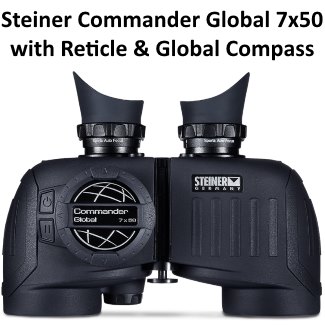
- Digital compass and precision distance-to-object reticle - shows precise, easy-to-read bearings superimposed on the edge of the viewing image, plus a reticle for calculating distance to an object. Smart-Illumination display automatically adjusts to ambient light from day mode to night mode.
- High Definition Diamond Marine Coating - 96% light transmission due to Steiner's unique maritime lens coating formula that reduces glare, increases clarity and maximizes optimal viewing in hazy light or after dark.
- Steiner Nano-Protection - Hydrophobic molecular coating creates a lens surface so smooth water sheets off and dirt, dust, snow and fingerprints are repelled for easy cleaning and a clear view.
- Makrolon Housing - is durable polycarbonate with NBR Long Life rubber armoring, creating a lightweight, rugged chassis that withstands 11 Gs of impact. Impervious to harsh conditions for generations of trusted use.
- N2 injection system - seals 14-psi pressurized dry nitrogen into the optic, for fogproof clarity in any condition - from artic cold to desert heat.
- Waterproof - Submersion to 33 feet.
- Sports-Auto Focus System - lets you focus each eyepiece to your vision once, then keeps images razor sharp from 20 yards to infinity. No more chasing focus on moving objects.
- Floating Neck Strap - is comfortably padded and bright yellow. It features 3M reflective trim making it highly visible keeping your Commander afloat and easy to spot in case of accidental spills.
- ClicLoc� system - attaches and releases neck strap or harness instantly with push button ease and designed so binoculars hang straight and action-ready.
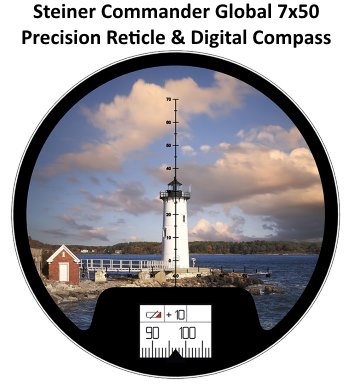
Steiner Commander Global Marine Binoculars Review:
"Sent in my 18 year old Commander Digital Compass binoculars to see if they could be salvaged - unfortunately no (sad).
Steiner offered to replace or credit via the Heritage Warranty to upgrade - so I upgraded. Commander Global is AWESOME !" -The Navigator
Other Steiner Commander Models
In addition to the Global version, the Commander series include two other lower-cost models: Commander 7x50c (with zone compass and reticle) and Commander 7x50 (without compass and reticle)
Steiner Commander 7x50c (with reticle and zone compass)
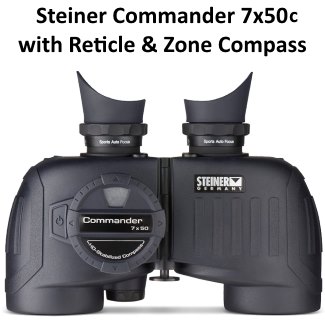
- This Commander model also includes a reticle, but not as detailed and therefore less precise as the Global model
- The compass is zone specific, i.e., Zone 2 will work within the latitudes covering the US, Europe, southern Russia/Turkey, and northern China. If you plan to do a lot of boating in different zones, then get the Global.
- These Commander's also have the Makrolon Housing, N2 Injection, Submersible to 33 feet, Sports-Auto Focus, Floating Neck Strap and the ClicLoc system, and have high-quality HD optics and Nano-Protection, but not the Diamond Marine Coating as in the Global model.
Steiner Commander 7x50c Marine Binoculars Review:
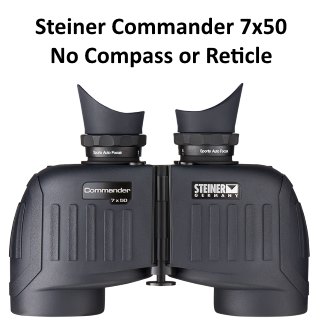
Steiner Commander 7x50 (without compass and reticle)
- This is the basic Commander model and does not have a reticle or compass.
- Like the 7x50c, they also have the Makrolon Housing, N2 Injection, Submersible to 33 feet, Sports-Auto Focus, Floating Neck Strap and the ClicLoc system, and have high-quality HD optics and Nano-Protection, but not the Diamond Marine Coating as in the Global model.
Steiner Commander Marine Binoculars Review:
"These are wonderful binoculars, and there are multiple reasons that these are my go to binoculars when size and weight constraints allow.
#1 these provide a wonderful, clear, and very pronounced 3 dimensional field of view, with very accurate color rendition.
#2 the lens are coated with Steiner Nano protection coatings, the rain beads up and seems to roll right off the lens.
#3 Ergonomic comfortable rubber armor, The armor provides good purchase for my hands even if i am sweating, or standing in the rain, and keeps the binoculars from being too hot to handle when using them in the sun.
#4 A no sniveling Heritage Warranty that covers the full life of the product." -Steiner Commander customer
Best Marine Binoculars Under $500
We still believe Steiner offers the best in this range due to their world-class lens and prism coatings, the proprietary silicon floating prism system for increased shock absorption, and the durable armoring, especially the polycarbonate housing in the Navigation Pro model.
Steiner Navigator Pro 7x50 Binoculars
Features on both Navigator models (with and without compass):
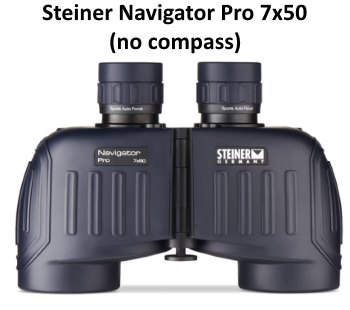
- High Contrast Optics - provide bright, sharply contoured images with natural color definition for outstanding viewing quality suitable for both beginners and professionals vs HD optics on Commander and Diamond Optics on Global models
- Floating Prism system - uses flexible silicone lens mount to absorb severe shock, impact and abuse without damage
- Makrolon Housing - is durable polycarbonate with NBR Long Life rubber armoring, creating a lightweight, rugged chassis that withstands 11 Gs of impact. Impervious to harsh conditions for generations of trusted use.
- N2 injection system - seals 14-psi pressurized dry nitrogen into the optic, for fogproof clarity in any condition - from artic cold to desert heat.
- Waterproof - Submersion to 16 feet (vs 33 feet on Commander Models)
- Sports-Auto Focus System - lets you focus each eyepiece to your vision once, then keeps images razor sharp from 20 yards to infinity. No more chasing focus on moving objects.
- ClicLoc Neoprene Strap vs Floatable ClicLoc Strap on Commander models
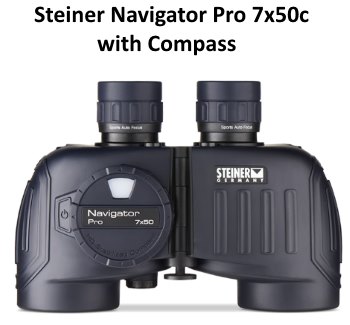
The Navigator Pro 7x50c model comes with an illuminated analog compass. It is actually over the $500 price range, closer to $600+, but we listed it here in case you had the extra $100 in your budget for the compass/reticle Navigator Pro model.
Steiner 7x50 Marine Binoculars Review
If you do not need a compass or reticle, the Steiner Marine 7x50 Binoculars are an excellent choice in this price range and are worth the extra cost from getting a cheaper model under $200.
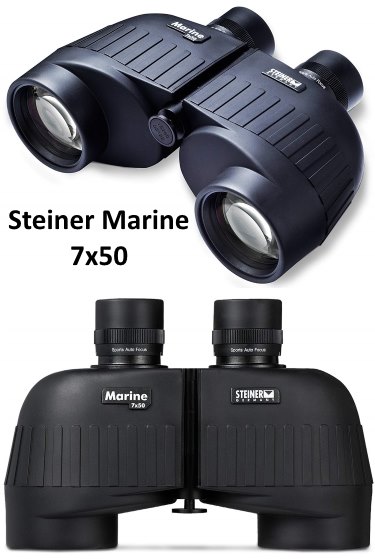
- Like the Navigator Pro model, the Marine 7x50 also has high contrast optics, the floating prism system and the sports-auto focus system.
- This basic Marine model has rubber armoring, but does not have the more durable polycarbonate Makrolon housing as in the Navigator Pro and Commander models.
- Waterproof - yes, but not submersible. Navigator Pro models have submersion protection to 16 feet; Commander models to 33 feet. The Marine model is fog-resistant and does not have the same nitrogen N2 injection treatment liket he Navigator Pro or Commander models.
- Standard Comfort Strap vs Navigator Pro ClicLoc Neoprene Strap or Floatable ClicLoc Strap on Commander models.
Fujinon Marine Binoculars ($200 range)
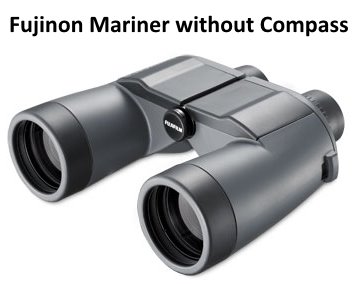
The Fujinon Mariner 7x50 Binoculars are an excellent choice as well if you don't want to pay ~$300 for the above Steiner Marine Binocular. The Mariner Series comes in two models: with compass (model WPC) and without compass (model WP).
Because of the polycarbonate housing, the Fujinon's are lighter than most marine binoculars that use metal alloys for housing and usually weigh 32 ounces (2 lbs) or more. These weigh 28.78 oz (without compass) 30.41 oz (with compass).
Another good feature, especially for eyeglass wearers, is the long eye relief at 18 mm.
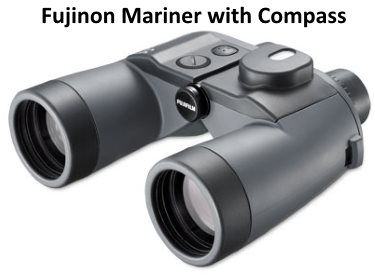
- Fully multi-coated optics
- Porro prism design
- Individual focus for each tube
- Polycarbonate housing
- Waterproof /Fogproof
- Floatable Neck Strap included
- World Compass with LED light (on WPC compass model)
Best Budget-Level Marine Binoculars Under $200
If you are looking for an entry-level pair of binoculars, then the Bushnell 7x50 Marine Binoculars are a great option. They have all the basic features you need such as:

- BaK-4 (barium crown) prism glass for bright, clear viewing with edge-to-edge sharpness
- Porro prism system for greater depth perception and a wider field of view
- Fully multi-coated optics: all optical surfaces are coated for superior light transmission and brightness
- Individual focus for each tube
- Non-slip, non-skid rubber armor protects the binocular from bumps and scratches, provides a comfortable gripping surface, and is easy to clean
- 100 percent waterproof - O-ring sealed and nitrogen purged for a reliable, fog-free performance
- Hermetically sealed - Airtight, watertight construction enables binoculars to float if dropped overboard; resists saltwater corrosion.

Bushnell 7x50 Marine Binoculars with Compass and Reticle Review
For about $30 more, Bushnell has the same model with an analog compass & illuminated reticle. calibrated for the northern hemisphere. Not for use in the southern hemisphere.
Best Marine Binoculars with Image Stabilization
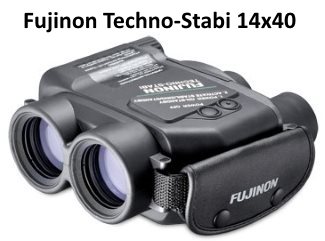
7x50 is the best size for marine binoculars, unless you want to get a pair with image stabilization. You can read more about our reviews, recommendations, and how they work on our image stabilized binoculars (2024) reviews page.
Below are some recommendations that have higher magnification with a large objective lens size and are waterproof or water resistant. Obviously, if you are regularly out in rough conditions and/or in inclement weather, then a waterproof pair would be more important.
The Canon 18x50 IS All Weather and Canon 15x50 IS All Weather are water resistant enough to use in rain but would not withstand being submerged.
The Canon 10x42 L IS WP is Canon's waterproof model as opposed to the All Weather model's above that are water-resistant.
The Fujinon Techno-Stabi 14x40 Image Stabilization Binoculars are their better waterproof model.
Best Marine Binoculars by Category
Best marine binoculars with compass: Steiner Commander Global or if you plan to do your boating in one zone, the Steiner Commander 7x50c.
Best marine binoculars without a compass: - Steiner Commander 7x50
Best marine binoculars under $500: Steiner Navigator Pro
Best marine binoculars under $200: Bushnell Marine Binoculars
Best marine binoculars with image stabilization: Fujinon Techno-Stabi 14x40
Best 7x50 Binoculars - A review of 7x50 binoculars in 3 price ranges.
Best Size for Marine Binoculars - Why 7x50? They're so big!
Just so you know and won't be surprised - but 7x50 binoculars are large in size and heavy. These are not binoculars you want to go on long hikes with or carry around your neck for hours (although a binocular harness would help with that vs a neck strap).
I've read reviews where people say the 7x50s are too big and they want something smaller. But, they're big and heavy for a reason - the larger size objective lens is what allows you to have a greater field of view, hold it steadier on objects, and allows for more light transmission through the lens for brighter images.
Again, 7 is the magnification, 50 is the objective lens size in millimeters and summed up, it's the best combination for allowing you to locate and see what you want to see on a moving boat - wide field of view and a bright, stable image. If you go up in magnification to a 10x50, you're going to have a narrower field of view, less light transmission, and more difficulty holding the binoculars steady with more visible shake of images.
If you go higher in magnification or get a smaller objective lens size, objects will be more difficult to locate, they will be less bright, especially in low light conditions, and it will be more difficult to hold the binoculars steady enough so whatever you're viewing isn't blurry from the magnified shaking of your hands, especially in rough water.
You can go higher in magnification if you consider getting image stabilized binoculars.
I used to work on a boat and at first was using 8x42 binoculars. It wasn't like they were completely useless, but when I switched to 7x50s, it made spotting and focusing and following objects so much easier.
I wouldn't go back to using 8x42s or any higher magnification beyond 7 or a smaller objective lens unless I wanted to use image stabilization binoculars.
In conclusion, the best size for marine binoculars are 7x50s since they will provide you with a wide, stable, bright image for locating and tracking boats, markers, buoys, bridge numbers, birds, and/or aquatic wildlife, even in rough seas and in low light conditions.
What's the difference between a pair of 7x50 marine binoculars and other 7x50 binoculars?
Sometimes, not much. Designated marine binoculars may include a built-in compass and/or lighted reticle. Some also have specific lens coatings to repel water better and may have better waterproofing so that they are submersible.
If you don't need all the extras, there are good 7x50s that aren't specifically for marine or boating use, but can be just as good to use on a boat as well as on land. I would still make sure to get a pair that are at least waterproof and fogprooff.
Also, most marine binoculars have individual eyepiece focusing instead of a center focusing knob which is good for most mid to long range viewing, but if you want to use your binoculars on land, i.e. for birdwatching, and want a shorter close focus, then you may want to consider a "regular" pair of 7x50s instead of one for specific marine use.
The Nikon Action Extreme 7x50 Binoculars would be a good alternative choice to our budget-priced marine binoculars (under $200) that are waterproof and fogproof, have multi-coated optics, long eye-relief, and a close focus of 23 feet.
Types of Binoculars: Jason, Mini, Zoom Digital, Infrared, High Power
Jason Binoculars - Auto Focusing Binoculars
Reviews of Favorite Birding Binoculars
Best Birding Binoculars - Our picks in 3 price ranges.
Nikon Monarch Binoculars - Comparison of All Monarch Models
Budget Nikon Action Binoculars - Comparison of all Action Models
There are lots of uses for marine binoculars. Obviously, you can use them for locating landmarks, channel markers, buoys, bridge numbers, tracking other boats, whether as a amateur boater, sailor, yacht owner or in a professional capacity such as marine patrol, ship captains, fishing guides, tug boat operators, Coast Guard, etc.. Or for you birders and whale watchers as well. And some enjoy using these for star gazing, especially with the great light-gathering capacity that they have. I read a review where they were using their marine binoculars as an aid to their GPS when jetskiing.
Steiner's Best Marine Binoculars - Admiral, Commander, Navigator Pro, and Marine
Waterproof Binocular Ratings - IPX0-IPX9K
|
Our Favorite Bird Watching Binoculars, Squirrel-Proof Feeder & Hummingbird Feeder Read Our Reviews: |
||
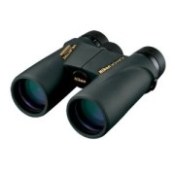
Nikon Monarch M5
Best mid-priced bird watching binoculars. Waterproof, shockproof, multi-coated ED-Glass. |
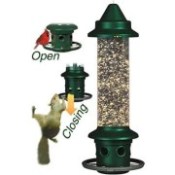
|
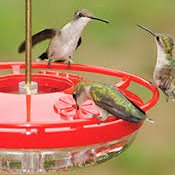
Best Hummingbird Feeder
Drip-Free, Ant-moat, Durable, Easy to Fill and Clean. |
| Click Images or Links To View More Info | ||